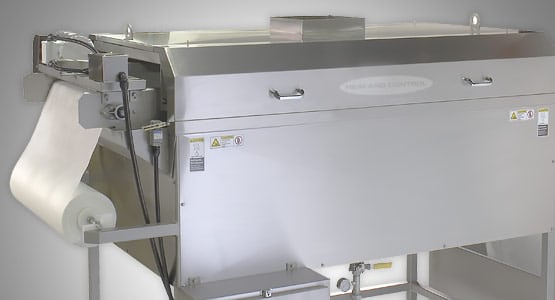Traditional food preparation was a painstaking process. Unlike modern shoppers who have the luxury of buying anything they can afford when they want it, our ancestors had to work with whatever was available to them at the time. That meant finding ways to eat almost anything — from foraged greens to the chewiest, most unappealing pieces of an animal. These ancient methods of food processing turned unlikely ingredients into meals that were not only sustaining, but also surprisingly delicious.
Define Food Processing and Food Preservation
You can think of food processing as anything you do to a food or a potential food to make it ready to eat. That covers a lot of territory because there are lots of steps in between the wheat that grows in a field to the packaged pretzel sticks you munch while you’re watching a football game on TV. If a method takes a raw ingredient and makes it edible, that’s processing. If it takes an existing food and transforms it in some way, that’s still processing. Food processing is generally understood as a preliminary step to cooking or something you do in place of conventional cookery.
Of course, cooking and baking are forms of processing as well, though they’re not usually thought of in those terms. And drying, salting, canning and all the other ways foods are preserved are types of food processing. Food preservation is actually a very specific form of food processing, one that’s focused on keeping otherwise-perishable foods safe and nutritious for extended periods. The difference between food processing and food preservation, then, would be that all preservation is a form of food processing, but not all food processing is about preservation.
Traditional Processed Foods vs. Modern Food Processing
It’s a common thing for magazine covers and food blogs to rail against the evils of processed foods, but that’s actually a very narrow use of the term. They are referring primarily to highly processed modern convenience foods, which are very different from foods processed in traditional ways. Traditional processing is usually referred to as primary or secondary: Milling and grinding the grain are considered primary processing processes, for example, while baking the grain into bread is secondary processing.
The less-acceptable form of processed food is the result of tertiary processing. These ultra-processed foods include items like complete microwaveable meals, sweetened breakfast cereal shapes, and all the many other products that make up the center lanes at your supermarket. They’re often high in fats, trans-fats, added sugars or salt, all of which carry significant health implications. They’re also often lower in fiber and nutrients than more natural foods. Although no food is perfect, traditional methods of food processing avoid most of those pitfalls.
Food Processing Is Fundamental for Humans
A lot of the foods we take for granted aren’t edible for human consumption, or, they’re minimally edible until they’re processed or cooked in some way, including many of the world’s staple crops, such as grains, beans and cassava. The human body can’t digest grains in their natural state. Beans are difficult to digest when they’re raw, and they contain substances that can make you very ill or prevent your body from absorbing nutrients properly. Cassava, the staple starch of many tropical regions, contains cyanide and is downright lethal unless it’s processed first.
Even foods that are ready to eat in their natural state benefit from some form of processing. For example, fermented vegetables, such as sauerkraut, pickles and kim chee (also called “kimchi”), not only last longer than fresh vegetables, but they also gain some nutrients from the fermentation process, and add interesting flavors and textures to meals. Traditional food production draws on a nearly infinite number of techniques, but they fall into a handful of broad and widely used methods.
Milling and Grinding Grain
In its natural state, grain comes with its kernels encased in a tough, inedible husk. Threshing the grain to remove that husk is the first step in making it edible. There are any number of ways to do that, from having animals walk over it to thrashing it with sticks. In fact, the nunchakus (nunchucks) used in so many martial arts movies are actually rice flails, meant originally for that exact job. Next is winnowing, tossing the grain so that the fragments of husk – the chaff – can be separated from the grain.
After this, the grain can be milled. That might mean simply grinding it to flour between two stones, which keeps the entire grain intact. Alternatively, just the outer layer of bran and germ might be rubbed off, leaving the starchy portion of the grain behind. This is how white rice and pearl barley are made.
Milling away the bran and germ takes away much of the grain’s nutrition, but there are practical reasons for doing it. One is that the oils in the bran and germ go rancid quickly, so removing them improves the grain’s shelf life. The other reason is that the milled grain cooks more quickly, and that reduces the amount of fuel you need to cook meals.
Drying as a Preparation and Preservation Method
Drying is another of the most fundamental methods of traditional food preparation. When the weather is hot and dry, it’s pretty simple. All you have to do is slice your foods thinly and lay them out in the sun, ideally with some sort of protection against bugs and scavenging kids or pets. Drying preserves foods by reducing the amount of water that’s available for bacteria or fungi to live on, which prevents them from causing spoilage.
Consider the case of beans, for example. Most other high-protein foods are highly perishable, from milk and eggs to fresh meats, fish and poultry. All of those can be preserved in many ways, but it’s a lot of work. With beans and other legumes, they just need to be stripped from their pods and left to dry in the sun and wind. Once they’re thoroughly dried, they can stored for years or even decades and still be edible.
Drying is mostly associated with food preservation, but it has practical and culinary virtues as well. Dried foods are lighter and take up a lot less space than fresh foods, which is important in nomadic cultures. Drying foods can also concentrate their flavors. Dried mushrooms are often tastier than their fresh versions, for example, and the dry-cured hams of Italy, Spain, the American South and China’s Yunnan province are celebrated worldwide for their deep, rich flavors.
Salting and Brining
Some foods don’t dry well or won’t dry without some assistance. Those foods are often salted or brined, which reduces bacterial action through a different method. The salt in brine – and to a lesser extent the sugar, which is optional but improves flavor – binds up water molecules in the food. Salt goes even further, killing bacteria directly by drawing out moisture through their cell walls and essentially leaving them dead from thirst.
Salting is an ancient technique and is used with a wide range of foods. Olives, for example, must be brined to remove a bitter compound before they’re edible. Meats and fish can be preserved for years in a heavy brine, providing a reliable source of high-quality protein for future needs. That’s crucial if you need to take advantage of the annual migrations of fish, birds or wildlife. It’s also important when you slaughter larger livestock, like hogs and steers. A full-grown animal represents a large investment of resources, so you don’t want to waste any of it.
Smoking as Process and Preservation
Smoking is another useful form of traditional food preparation. It’s quite simple: The food is suspended over a low, smoldering fire of wood or other aromatic substances such as hay or tea. Smoking isn’t a preservation method in its own right, but compounds in the smoke help prevent fats from going rancid in the smoked food. That makes smoking valuable as a way to extend the usable life of dried or salted foods, so the methods are often used together.
Smoking is primarily about flavor, though. The smoking process adds a great deal of savor to fish, meats or poultry, and much-loved foods, such as bacon, ham and smoked salmon, wouldn’t be nearly as delicious without it. Smoking also works well with other foods, from cheeses to peppers. The smoked paprika of Spain and Hungary and the chipotles of Mexico are made by smoking and drying peppers to make a smoky, concentrated flavoring ingredient.
Fermentation and Pickling
Pickling is a preservation technique that grew out of salting and brining. When some foods are brined, the salt draws their natural juices and sugars from their cells. Natural bacteria and yeasts consume those sugars and excrete acids, which preserve the foods and alter their flavors and textures. Commercial mass-market pickles often shorten the process by just canning vegetables in vinegar, which works but doesn’t give the same complexity of flavor.
Pickling is something you probably think of in relation to vegetables, but it’s used for other foods too. The same fermentation process is used to make the fish sauces that flavor so many Asian cuisines and probably was used to create a similar sauce that the ancient Romans called garum. In Greenland and the Sweden, fish are fermented to make extremely malodorous dishes called hakarl and surströmming. Even sushi was originally made by fermenting rice and fish together.
Other fermented food products include beer and wine, of course, but also yogurt, kefir, sour cream, kombucha, soy sauce, black bean sauce and most cheeses. These foods are often combined with other techniques: Cheeses can be brined and then left to cure and dry for a long time, for example, which results in intensely flavored products like Parmigiano-Reggiano.
But Wait, There’s More!
There are plenty of other traditional methods of food processing, but going into all of them in detail would require a book. Butchering meats, poultry and fish is a form of food processing, as are sausage-making and its related arts, such as the production of head cheese, souse or scrapple. These methods are designed to make sure that every single part of an animal gets used efficiently.
If you’re seriously interested in traditional foodways, it’s best to start by learning a single technique that appeals to you and then build on those skills. To make your own sauerkraut, for example, all you need is a cabbage, some salt, a food-safe container with an airtight lid and a cool place to let it ferment. Making your own vinegar or kombucha is almost as simple and a whole lot more Instagram-friendly. Cheese making requires a bigger investment in time and materials, but it’s relatively immune to the rise and fall of social media trends.
Whichever project you choose as your starting point, you’ll probably find that re-connecting with your food through a preservation process is an intensely rewarding experience.









